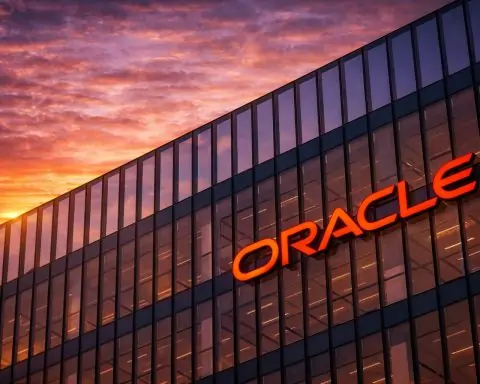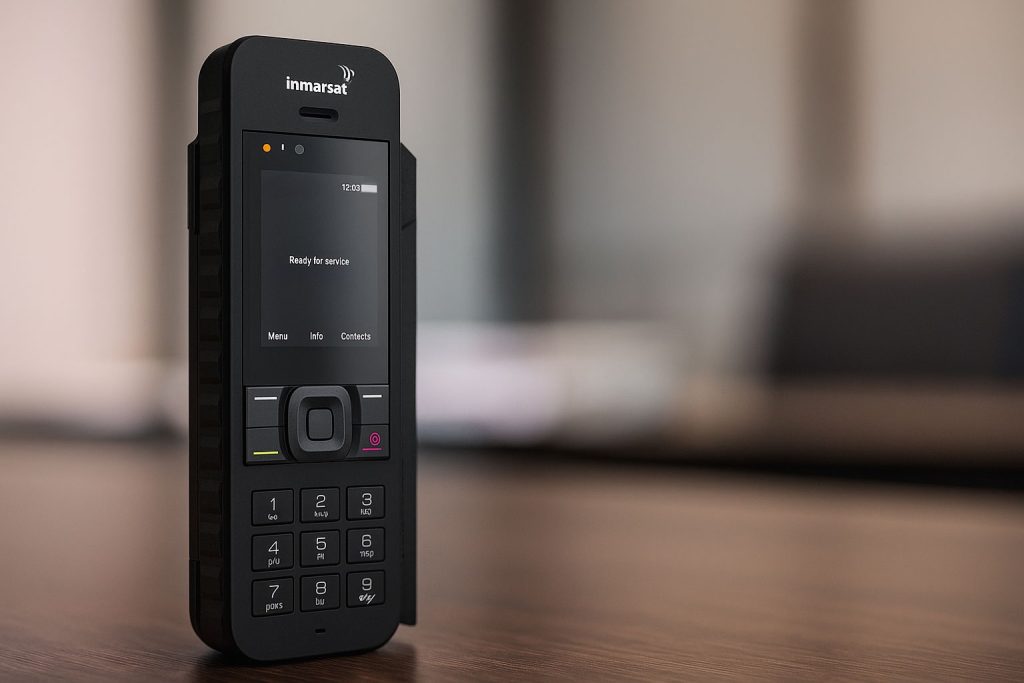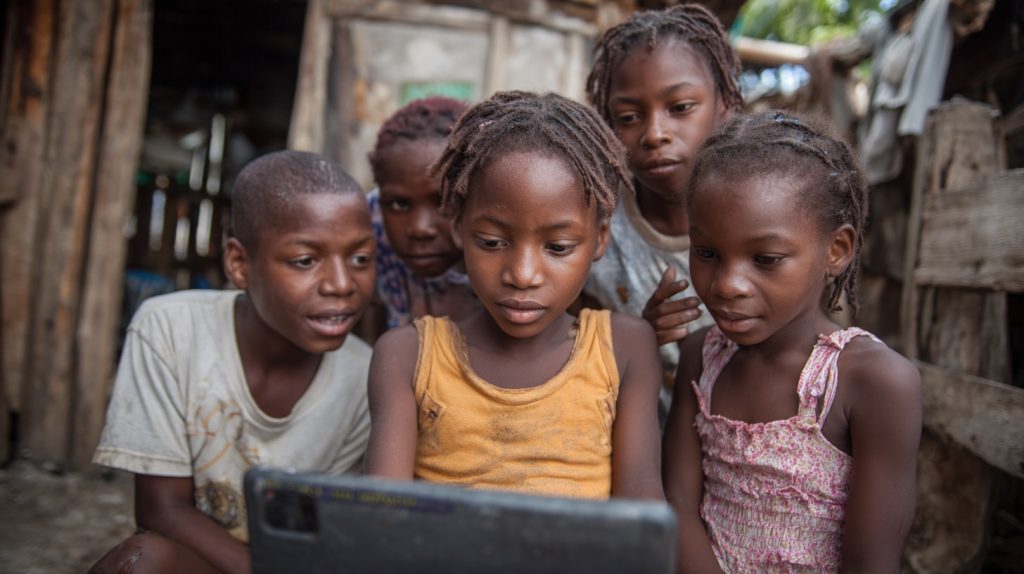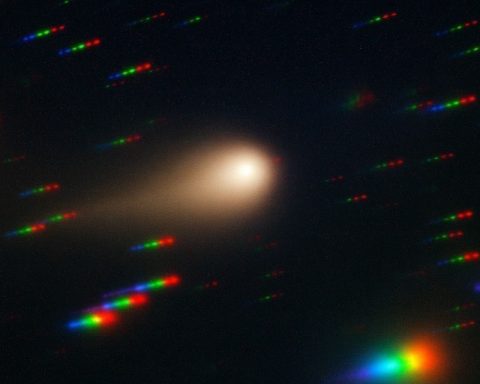- MakTel’s FTTH network passes over 270,000 households and offers up to 1 Gbps on fiber, with DSL available nationwide at about 50–60 Mbps where fiber is not yet present.
- A1 Macedonia (formerly One.Vip) operates a hybrid cable and fiber network and had 56% of the population with 5G-ready fiber or cable by 2022, with up to 200 Mbps symmetric fiber in bundles.
- Telekabel runs its own network in 17 cities and has 100% fiber coverage in at least four cities, offering fiber plans around 40 Mbps for MKD 600 per month.
- By 2022, about 75.6% of Macedonian households had access to fixed broadband.
- MakTel launched the country’s first 5G service in February 2022, and by late 2023 its 5G network covered 26 cities and roughly 82% of the population.
- A1 Macedonia launched 5G in late 2022 and reached about 56.6% population coverage by the end of 2022.
- Mtel (Telekom Srbija) entered the North Macedonian mobile market in 2022, launching service as the market’s third operator.
- Starlink became available in North Macedonia in June 2022, and by mid-2023 the Starlink Mini kit was advertised at MKD 18,399 with MKD 2,170 monthly service.
- The National Operational Broadband Plan (2019–2029) targets 100% availability of at least 100 Mbps by 2029 and at least 1 Gbps symmetric for public institutions by 2029.
- As of late 2024, North Macedonia had about 545,000 fixed broadband subscribers, up around 4% year on year.
Broadband Infrastructure: Fiber, DSL, and Cable
North Macedonia’s fixed broadband landscape has evolved from legacy DSL lines to modern fiber-optic networks. The incumbent Makedonski Telekom (MakTel) remains the dominant fixed-line provider, but its once-ubiquitous DSL service is gradually being eclipsed by fiber. In recent years MakTel has aggressively expanded fiber-to-the-home (FTTH), migrating many DSL customers to fiber for higher speeds [1]. The company boasts the largest fiber network – over 270,000 households passed by fiber as of the early 2020s [2] – and now offers plans up to 1 Gbps on its optical infrastructure [3]. Where fiber isn’t yet available, MakTel still provides ADSL/VDSL (up to ~50–60 Mbps) to ensure nationwide coverage.
Meanwhile, A1 Macedonia (formerly One.Vip) has emerged as a strong competitor. A1 inherited a substantial hybrid fiber-coaxial (HFC) cable network (via its 2016 merger with Blizoo) and has since been rolling out FTTH in many areas [4] [5]. A1’s cable and fiber networks cover all major cities and towns. For example, A1 offers 200 Mbps symmetric fiber plans in its combo bundles [6], highlighting its push into high-speed fiber services. The country’s largest independent ISP, Telekabel, has also been pivotal. Telekabel started as a cable TV provider in the 1990s and pioneered cable internet in Macedonia, helping drive broadband adoption with affordable prices [7]. Today Telekabel operates in 17 cities nationwide [8] and is overbuilding its old coaxial network with fiber. In an interview, Telekabel noted it has 100% fiber-optic coverage in at least four cities, with plans to extend fiber to more towns and even some villages [9].
Competition among these ISPs has led to broad coverage and choice for consumers. By 2022, about 75.6% of households had access to a fixed broadband connection [10]. As shown in Table 1, the main fixed providers each utilize different infrastructure, but all now offer “ultrafast” speeds (100+ Mbps) in areas they serve. Cable operators like Telekabel and A1 have been upgrading to DOCSIS 3.1 and fiber, while MakTel’s DSL footprint fills in rural gaps. Effective competition between DSL, cable, and fiber has benefited users, though DSL subscriptions are steadily declining as customers upgrade to faster fiber or cable options [11].
Table 1. Major Fixed Broadband Providers in North Macedonia [12] [13]
| Provider | Network Technologies | Coverage & Reach | Max Speeds Offered | Notes |
|---|---|---|---|---|
| Makedonski Telekom (MakTel) | Fiber (GPON) + DSL (ADSL/VDSL) | Fiber to ~270k households; DSL nationally (most towns/villages) [14]. | Up to 1 Gbps on fiber; 50 Mbps+ on VDSL [15]. | Incumbent; ~40–45% market share. Wholesale access available to rivals [16]. |
| A1 Macedonia | Cable (HFC) + Fiber (FTTH) | Cable in all major cities; 56% of population had 5G-ready fiber/cable by 2022 [17]. Rapid fiber rollout in urban areas. | Up to 200 Mbps symmetric on fiber (in bundles) [18]; 100+ Mbps on cable. | Part of A1 Telekom Austria; ~45% fixed broadband share. Provides converged TV, mobile, and internet (“Combo” bundles). |
| Telekabel | Cable + Fiber (FTTH/FTTB) | Own network in 17 cities (e.g. Štip, Bitola, Ohrid, Prilep, etc.) [19]; upgrading cities to full fiber coverage [20]. Also expanding to some villages. | Common packages: e.g. 40 Mbps fiber for MKD 600 (~€10) monthly [21]. Higher speeds (100 Mbps+) available on fiber; cable plans up to ~50 Mbps+. | Largest domestic ISP (not foreign-owned). Known for no-contract plans and aggressive pricing to make internet affordable for all [22] [23]. |
Sources: Market data and provider information [24] [25] [26] [27].
Overall, Macedonia’s fixed broadband infrastructure has made significant strides. As of late 2024, there were roughly 545,000 fixed broadband subscribers nationally, up about 4% year-on-year, indicating steady growth in uptake as networks expand [28]. Fiber deployment is a priority – the number of fiber lines per capita is still relatively low (about 3.2 per 100 people in 2019) compared to European averages [29], but ongoing investments by MakTel, A1, and Telekabel are rapidly bridging this gap. The government’s National Operational Broadband Plan aims for every household to have access to at least 100 Mbps connectivity by 2029 [30], so we can expect further fiber build-out and possibly wholesale or public-private projects to reach the more remote areas.
Mobile Internet: 3G, 4G, and 5G
Mobile broadband is ubiquitous in North Macedonia, with near-total population coverage on 3G/4G networks and a fast-emerging 5G era. The mobile market historically was a duopoly between MakTel (branded T-Mobile) and A1 Macedonia (formerly Vip/One), but in late 2022 a third operator Mtel (Telekom Srbija) launched service, injecting new competition [31] [32]. As of 2023, two primary mobile network operators (MNOs) serve the majority of users: MakTel and A1, each with roughly 1–1.2 million mobile subscribers (in a country of ~2 million people) [33]. The newcomer Mtel is still building its customer base but plans to offer full telecom services over time [34] [35].
North Macedonia was an early adopter of mobile data technologies in the region. 3G (UMTS) networks achieved 99% population coverage by the mid-2010s [36]. 4G LTE has been available since around 2013–2014; today LTE coverage is effectively universal – 99.9% of the population has 4G access [37]. Both MakTel and A1 invested in LTE-Advanced upgrades to boost capacity and speeds [38]. According to the regulator, 4G covers 99.5% of inhabitants as of 2019 [39], placing Macedonia above many peers in network reach.
The 5G rollout began recently but swiftly. The telecom regulator (AEK) awarded 5G spectrum licenses in mid-2022 (700 MHz and 3.6 GHz bands) to all applicants [40]. MakTel switched on the country’s first 5G service in February 2022, initially using Dynamic Spectrum Sharing on 4G frequencies [41]. By late 2023 MakTel announced its 5G network reached 26 cities and ~82% population coverage, even offering gigabit-class 5G speeds in most towns [42] [43]. A1 Macedonia was not far behind – it launched 5G in late 2022 and achieved ~56.6% population coverage by year-end [44], with plans to rapidly extend this footprint. The new entrant Mtel is also 5G-ready as it builds out network infrastructure. The license terms require each operator to cover at least one city with 5G by end of 2023 [45], a benchmark all surpassed easily (Skopje and many other cities are already covered).
Notably, Macedonia’s 5G network performance is among the best in the region. In Q2 2023, it recorded the fastest median 5G download speed in Central/Eastern Europe at 317.9 Mbps, beating all neighboring countries [46]. Even at the high end, 90th-percentile 5G speeds approached 788 Mbps, showing the networks’ capacity [47]. The capital city Skopje’s mobile broadband was ranked 25th globally in mid-2023 (median download ~97 Mbps across all technologies) – ahead of many Western European capitals in overall mobile speed [48]. This impressive showing reflects the substantial investments operators made in modernizing networks (MakTel alone invested over €70 million in 2022 for network development [49]). It also helps that 5G in Macedonia is still relatively lightly loaded with users, allowing peak performance.
Table 2. Mobile Network Operators and Coverage in North Macedonia [50] [51]
| Operator | Subscribers (approx.) | 4G Coverage (population) | 5G Coverage (population) | Notable Network Features |
|---|---|---|---|---|
| MakTel (T-Mobile) | ~1.2 million (est.) | ~99.9% [52] [53] of population (nationwide) | ~82% (2023) [54]; 26 cities covered; 5G on 700 MHz & 3.6 GHz bands. | Incumbent mobile operator (since 1996). First with 4G LTE and first to launch 5G (Feb 2022) [55]. Known for top speeds; Ookla award for fastest 5G. |
| A1 Macedonia | ~1.2 million (est.) | ~99.8% [56] of population (nationwide) | ~56.6% (end of 2022) [57]; expanding rapidly in 2023–24. | Entered as “ONE”/Vip; merged 2015. Strong 4G network (confirmed by regulator tests). 5G launched 2022, ramping up coverage. |
| Mtel (Telekom Srbija) | N/A (new in 2023) | n/a (roaming on partners initially) | n/a (rolling out) | Launched mobile service in Dec 2022 [58], breaking duopoly. Expected to deploy 4G/5G infrastructure and possibly offer fixed-wireless access. Currently small but growing presence. |
Sources: Operator reports and regulatory data [59] [60] [61].
With robust competition, mobile internet is widely available and relatively affordable. The ITU’s mobile data price benchmark (for ~2 GB use) in 2023 was $12.30 per month in North Macedonia, equal to about 2.0% of average income, which is better (more affordable) than the global average of 5.3% [62]. In practice, many users pay even less – for example, a 4 GB monthly prepaid data pack can cost around MKD 199 (≈€3) on promotion [63]. Both major operators offer affordable unlimited on-net bundles and generous data plans by regional standards. Mobile broadband uptake has grown accordingly: active mobile data subscriptions reached about 86% of the population in 2022 [64]. This means most Macedonians use mobile internet on their phones, reflecting both the convenience and the fact that mobile networks fill connectivity gaps in some areas lacking fast fixed lines.
Satellite Internet: Reaching the Final Frontier
For truly remote or off-grid connectivity – the “final frontier” of internet access – satellite broadband has become an option in North Macedonia. Historically, satellite internet was niche, used only by a few businesses or rural users due to high costs and latency (e.g. VSAT links). However, the arrival of Starlink (SpaceX’s low-Earth orbit satellite service) is changing the game. Starlink became available in North Macedonia in June 2022, after the government swiftly authorized it as part of efforts to expand rural connectivity [65]. The service is now accessible nationally, providing high-speed, low-latency internet via a constellation of LEO satellites.
Starlink’s launch was greeted with excitement in the tech community, as it promises to connect remote mountain villages and underserved rural areas where laying fiber or even reliable 4G is challenging [66]. Initially, the price was quite steep – early adopters had to pay around MKD 39,700 (≈€650) for the hardware kit and MKD 6,570 (€105) per month for service [67]. This amounted to over 49,000 denars ($1,100 CAD) upfront when including shipping [68]. Despite the cost, Starlink delivers 100+ Mbps download speeds with latency under 50 ms, a huge improvement for rural users previously stuck on dial-up or spotty 3G. By mid-2023, SpaceX began introducing lower-cost options – a new “Starlink Mini” kit in North Macedonia is advertised at MKD 18,399 (€300) for equipment and MKD 2,170 (€35) monthly [69], significantly reducing the barrier to entry. These price cuts make satellite broadband more competitive and attainable for households off the fiber grid.
Aside from Starlink, other satellite internet solutions are limited. There is no domestic satellite ISP, but regional providers (like Viasat/KA-SAT or Inmarsat) technically cover the Balkans. Those legacy GEO satellites offer connectivity (up to ~20–50 Mbps) but with high latency (~600 ms) and data caps, thus seeing very low usage in Macedonia. The government and telecoms have occasionally used satellite links for connecting remote public institutions or for emergency backups. Going forward, LEO satellite services are expected to play a complementary role – ideal for rural and alpine areas, or as redundant links – while fiber and 5G handle the bulk of urban and suburban connectivity. With Macedonia’s mountainous terrain, satellites truly represent the “final frontier” reaching places ground networks struggle to cover.
It’s worth noting that North Macedonia has a legacy of ambitious wireless projects to serve rural communities. Back in 2005–2006, a USAID-sponsored initiative called “Macedonia Connects” blanketed the country with Wi-Fi and WiMAX connections, famously making Macedonia “the first all-broadband wireless country in the world” at that time [70]. That mesh network provided wireless internet access to 95% of the population, including remote shepherd villages in the mountains [71]. Every school in the country was connected under the project [72]. While that early wireless network has since been surpassed by modern 3G/4G cellular coverage, it demonstrates the country’s longstanding commitment to creative solutions for rural connectivity. In the same spirit, today’s embrace of Starlink and future satellite technologies will help ensure even the most isolated Macedonian households can get online, truly leaving no one behind as internet access enters the final frontier of space.
Government Initiatives and Digitalization Policies
The Macedonian government has played an active role in expanding internet access and driving digital development. As an EU candidate country, North Macedonia has aligned its telecom regulations with the EU framework – establishing an independent regulator (AEK) and promoting competition and infrastructure sharing [73] [74]. Several strategic plans guide the sector:
- National Operational Broadband Plan (NOBP) 2019–2029: This is a comprehensive broadband roadmap adopted in 2019. It sets ambitious targets, such as 100% availability of ≥100 Mbps broadband for all households by 2029, with an option to upgrade to gigabit speeds [75]. It also mandates that all public institutions (schools, universities, hospitals, government offices) have at least 1 Gbps symmetric internet by 2029 [76]. To achieve this, the plan encourages expansion of fiber backbones and last-mile networks, especially in rural and under-served areas. There’s an emphasis on public-private partnerships and leveraging EU funds to finance rural broadband projects.
- National ICT Strategy 2021–2025: This strategy (and a draft 2023–2030 strategy under consultation) outlines broader digital transformation goals. It focuses on e-government services, digital skills, and inclusion, while also highlighting the need for robust connectivity as a foundation [77] [78]. The government has committed to measures like zeroing personal income tax for IT sector workers by 2023 and investing in digital literacy programs [79]. Part of the strategy involves strengthening the Broadband Competence Office, which monitors broadband rollout progress and advises on policy [80].
- Digital Agenda for the Western Balkans: North Macedonia participates in regional initiatives under EU auspices to improve digital infrastructure. For example, since 2021 roaming charges were abolished among Western Balkan countries (including Macedonia), facilitating more affordable mobile internet use across borders [81] [82]. The country also signed MOUs on 5G security and innovation with the US and EU [83], aligning with best practices for next-gen networks.
Concrete government-led programs include subsidies for rural broadband expansion. In recent years, AEK (the regulator) has run tenders using the Universal Service Fund to co-finance connectivity in white zones (areas with no commercial broadband). There are reports of the state supporting fiber builds to dozens of rural settlements, often in partnership with MakTel or others. Additionally, the government invested in a National Education Network linking all schools (initially via the Macedonia Connects wireless project, now largely via fiber or LTE) [84]. Municipalities have also received support to offer public Wi-Fi hotspots in town centers, as part of the “Digital Municipality” efforts.
On the policy side, laws have been updated to facilitate telecom growth. The Electronic Communications Law was amended to streamline permits for network construction and implement EU broadband cost-reduction rules (like easier access to rights-of-way and infrastructure sharing) [85] [86]. The government has also pushed e-governance – launching a one-stop e-services portal and digitizing many public services – which in turn increases demand for reliable internet nationwide [87] [88].
In summary, government initiatives have been crucial in creating an enabling environment for internet expansion. From early wireless pilots to current fiber goals and 5G spectrum auctions, public policy in North Macedonia consistently aims to bridge the digital divide. The authorities recognize that connectivity is key to economic growth and EU integration, and their strategies reflect a balance of market-driven competition and targeted state support to reach areas the market might neglect. The continued focus on digital inclusion (for example, a plan to connect all “dead spots” with at least 30 Mbps by 2025) should ensure that even hard-to-reach communities get attention in coming years.
Urban vs. Rural Connectivity
A clear urban–rural gap in internet access exists in North Macedonia, as in most countries, but it has been narrowing gradually. Urban areas, especially the capital Skopje and cities like Bitola, Prilep, Tetovo, and Ohrid, enjoy the fastest and most diverse connectivity options. In cities, residents often have a choice of fiber from MakTel or A1, cable internet from A1/Telekabel, and of course strong 4G/5G mobile signals. For instance, Skopje now has widespread FTTH coverage (both MakTel and A1 have built out networks in the city) and multi-gigabit international fiber backbones pass through it. Internet speeds in urban centers are on par with European averages – gigabit fiber is available, and 5G mobile delivers hundreds of Mbps [89]. Moreover, competition is fiercest in cities, translating to attractive bundle deals (TV + internet, etc.) and promotional prices for city dwellers.
In rural areas and small villages, connectivity historically lagged. Many villages in hilly regions had only basic ADSL or even dial-up in the 2000s. The Macedonia Connects project in 2006 was a game-changer, bringing wireless broadband to remote mountain villages that lacked even phone lines [90]. That project’s legacy is seen today in that virtually every inhabited locality has at least some wireless internet coverage. According to official data, coverage of at least 30 Mbps broadband is ~83% nationwide, but this figure drops in some remote rural pockets [91]. High-speed (>100 Mbps) coverage is ~63% of population [92], indicating many rural areas still lack access to ultrafast networks (since most cities are covered, the uncovered portion is largely rural). Indeed, as of 2022 only 2.5% of households had an active subscription to “ultrafast” broadband (100+ Mbps), suggesting that rural households either don’t have or aren’t adopting those speeds yet [93]. This low uptake highlights the urban-rural digital divide – city families are more likely to have gigabit internet, while a village family might be on a slower DSL plan or using mobile data for home access.
That said, the situation is improving. All three mobile operators have obligations to extend 4G/5G coverage to rural communities; 4G covers essentially 100% of rural population (even if signal is weaker or only outdoors in some spots) [94]. For many villages, 4G home internet (via modem) is a popular solution – both MakTel and A1 sell “home LTE” packages with large data caps, targeting areas without fiber. These wireless broadband options give respectable speeds (20–50 Mbps typically) and have become the default broadband for some rural users. Telekabel’s expansion is also noteworthy: it has extended coaxial/fiber lines to a number of smaller towns and even some nearby villages, and continues to lay fiber in more rural settlements [95] [96]. The government’s broadband subsidies often focus on areas with no ISP; in recent years dozens of remote villages have been connected either by fiber drops from the nearest town or via microwave links funded through universal service programs.
The affordability gap between urban and rural is also a concern. Rural residents generally have lower incomes, and if they are limited to using mobile data for home broadband, the cost per GB can be higher (or the performance lower) than an equivalent unlimited fiber plan in the city. The government monitors these inequalities – for example, the broadband cost (relative to income) in Macedonia has been above the 2% GNI threshold considered affordable [97], which disproportionately affects rural and low-income users. By addressing coverage and offering entry-level packages (like Telekabel’s MKD 600 plan for 40 Mbps [98]), the aim is to make internet equally accessible in rural communities.
In summary, urban Macedonia is well-connected with high speeds, while rural areas still rely on a mix of older tech and mobile solutions. The urban–rural digital divide is evident in metrics like internet use (roughly 87% of the overall population uses the internet [99], but usage is likely near-universal in cities and lower in remote areas). However, ongoing efforts – extending fiber backhaul to villages, 5G coverage expansion, and satellite options – are steadily bringing rural areas up to speed. The government’s broadband plan explicitly targets rural connectivity, so by 2029 the gap should be much smaller, with every village getting at least 100 Mbps via fiber or 5G [100] [101]. North Macedonia’s experience shows that even a small, mountainous country can make big strides in rural internet access with the right mix of policy, technology, and innovative solutions like nationwide Wi-Fi and satellites.
Internet Affordability and Speed Comparisons
When it comes to internet speeds and affordability, North Macedonia presents an interesting mix of strengths and challenges. On one hand, the country has achieved impressive mobile broadband speeds, ranking among global leaders; on the other hand, fixed broadband speeds and uptake still trail Western Europe, and affordability (relative to income) has room for improvement.
Speed performance: As of 2025, Macedonia’s average fixed broadband download is about 50 Mbps, which places it 102nd globally in Ookla’s rankings [102]. The average upload is ~33 Mbps [103]. These averages reflect the mix of older DSL/cable connections (10–50 Mbps) and newer fiber lines (100–1000 Mbps). By contrast, the average mobile download speed is an impressive 167.9 Mbps, ranking 14th in the world [104]. This unusually high mobile ranking is largely thanks to the swift 5G rollout – early 5G networks in Macedonia offer very high throughput, boosting the national average. In fact, North Macedonia’s 5G median speed (318 Mbps) was the highest in Central/Eastern Europe in 2023 [105], outpacing even some EU countries. This indicates that the mobile operators have done an excellent job leveraging modern equipment and ample spectrum. It’s a bit of a reversal of the usual gap: in many countries, fixed broadband is faster than mobile, but in Macedonia the cutting-edge 5G can exceed the typical home broadband speed. Of course, top-tier fiber users in Macedonia can get 1 Gbps, but the national fixed speed average is pulled down by legacy connections (for example, many households still subscribe to ≤20 Mbps DSL packages).
Affordability: The cost of internet relative to local incomes has been a focal point. The Broadband Commission’s affordability target is for 1 GB of data to cost less than 2% of GNI per capita. North Macedonia has struggled to meet this in the past for fixed broadband. In 2020, a basic fixed broadband plan (5 GB data) cost about 3.3% of GNI per capita, far above the Europe region’s average of 1.2% [106] [107]. This suggested that broadband was relatively expensive for Macedonians at that time. Mobile data was cheaper than fixed (1.6% of GNI for 1.5 GB in 2020) but still triple the EU average of 0.5% [108]. The good news is that prices have been trending downward while incomes rise. By 2023, the average cost of a mobile plan meeting the ITU’s basket (140 mins, 70 SMS, 2 GB data) was $12.30, down ~6% from the year before [109]. In absolute terms, unlimited home broadband prices in Macedonia are quite low: for example, MakTel’s 300 Mbps fiber plan costs ~MKD 1,199 (≈€20) per month [110], and Telekabel’s popular 40 Mbps plan is just MKD 600 (≈€9.70) [111]. These prices are a fraction of what similar plans cost in Western Europe. However, Macedonian incomes are also lower, so affordability in relative terms remains a concern – especially for low-income families or those in rural areas. The government has acknowledged that the country was “well above the 2% GNI” affordability threshold and that this risks a digital divide between high- and low-income citizens [112] [113]. Consequently, policy measures (like promoting competition and possibly subsidies for low-income users) are on the agenda to improve affordability.
Regional comparison: Within the Western Balkan region, Macedonia is generally in the middle of the pack for internet indicators. Its internet usage rate (around 87% of people use the internet) is one of the higher in the Balkans and just slightly below the EU average of ~89-90% [114] [115]. Fixed broadband penetration is about 28% of the population (2022) [116], which translates to roughly 55% of households – this is behind EU levels (over 70% of households) but ahead of some neighbors. Mobile penetration is high at over 100% (more than one SIM per person on average) [117], and smartphone/mobile internet use is widespread among young people. In terms of speed, as noted, mobile internet in Macedonia outshines many neighbors, while fixed broadband speeds are improving but still catching up. For instance, Macedonia’s median fixed speed is slower than in Slovenia or Croatia, but comparable to Serbia or Albania.
In practical terms, internet affordability and quality have improved year by year. Consumers today get far better value – a few years ago, a typical home DSL plan was 10 Mbps; now many can get 50–100 Mbps for the same price or less. The competition between three fixed ISPs and now three mobile operators is driving price competition and network investments. If the trend continues, Macedonia should see broadband prices continue to fall in real terms, and speeds (especially upload speeds and latency on fixed networks) improve to European standards. The country’s small size and unified regulatory approach actually give it an advantage: once the infrastructure is upgraded, it’s easier to cover the whole population and ensure everyone benefits. With 5G and fiber expansion ongoing, the outlook is that both speed and affordability metrics will align more closely with EU averages in the near future, fulfilling the goal of internet that is fast, cheap, and accessible to all.
Historical Development of Internet Infrastructure
North Macedonia’s journey to today’s internet landscape spans roughly three decades, marked by rapid modernization and a few pioneering moments. Here’s a brief chronology of key milestones in the development of the country’s internet infrastructure:
- Mid-1990s – Dial-up Era and Early Telecom: Internet access arrived in the late 1990s via dial-up services over the analog telephone network. Makedonski Telekom (then a state-owned monopoly) provided the first internet dial-up connections. In 1995, only a handful of users were online; by 1999, cyber cafés and university networks started popping up in Skopje. The calling code +389 became synonymous with the country’s connectivity [118]. During this period, the telecom sector began liberalizing – the first GSM mobile network (Mobimak, now T-Mobile/MakTel) launched in 1996 [119], laying foundations for mobile data later.
- Early 2000s – Introduction of Broadband (ADSL, Cable): By 2001–2003, the first ADSL broadband lines were rolled out by MakTel, offering “always on” internet at 128–512 kbps – a huge upgrade from dial-up. Around the same time, cable internet debuted: Telekabel claims the title of first to offer cable broadband in Macedonia, launching service in the early 2000s [120]. Telekabel’s entry was transformative as it drove prices down and made internet affordable to average households [121]. The early cable plans were around 256 kbps to 1 Mbps but significantly cheaper per minute than dial-up. In 2001, Telekabel also laid an optical fiber backbone – one of the first in the country [122]. By 2005, Macedonia had multiple ISPs and around 15% of population online, still mostly via slow connections.
- Mid-2000s – “Wireless Country” Project and Mobile Data: The year 2006 was a watershed. With support from USAID, the Macedonia Connects project made international headlines by covering 95% of the population with wireless broadband [123]. Using a network of Wi-Fi hotspots and WiMAX transmitters (and an ISP called On.net’s mesh network), Macedonia declared itself the first country with near-universal wireless internet access [124]. This allowed even remote schools and villages to get online (often via community computer labs) and was envied by more developed countries at the time [125]. Concurrently, the second mobile operator Cosmofon (later renamed One) had launched (2003), breaking MakTel’s mobile monopoly. By 2007, 3G UMTS networks went live (T-Mobile in 2007, ONE shortly after), enabling mobile internet on phones and via USB dongles up to ~384 kbps then 7.2 Mbps (with HSPA). The first smartphones and BlackBerry services appeared in this period, though mobile data remained costly initially.
- Late 2000s – Privatization and Market Liberalization: Makedonski Telekom was privatized in 2001, with Magyar/Deutsche Telekom acquiring a majority – this brought foreign investment for upgrades [126]. The government established the Agency for Electronic Communications (AEK) to regulate the sector. In 2007, Telekom Austria launched Vip as a third mobile operator, intensifying competition (though ONE and Vip would later merge). Internet penetration crossed 50% of households by 2009 [127], aided by cheaper tariffs and expanding coverage. The first fiber-to-the-building connections started appearing in upscale business districts of Skopje around 2009–2010 (offered by smaller ISPs and MakTel to corporate clients).
- 2010s – The Broadband Acceleration (Fiber and 4G): The 2010s saw a dramatic jump in speeds and access. 4G LTE was launched by T-Mobile/MakTel in 2013 – Macedonia was one of the earlier countries in the region to get LTE [128]. A1 (Vip) followed with 4G soon after. By 2016, 4G covered the majority of the population, and smartphones had become ubiquitous. On the fixed side, around 2010 MakTel began widespread FTTC/FTTH deployments, initially VDSL2 to curb distances, and later true fiber to home. The merger of ONE and Vip in 2015 into a single operator (One.Vip, later A1) reshaped the market: from 2016 onward, two converged giants (MakTel and A1) competed in both mobile and fixed arenas [129]. They bundled services (e.g. Magenta1, Combo packages) and invested in network expansion. Cable operator Blizoo was acquired by Vip, consolidating the fixed market. By 2018, fiber broadband subscriptions grew and DSL began to decline [130]. Government initiatives like free Wi-Fi hotspots in public spaces and “digital villages” kept momentum.
- Late 2010s – Rising to Modern Standards: By 2019, internet usage hit ~79% of individuals [131]. The government adopted the National Broadband Plan in 2019, signaling a commitment to gigabit goals. In the same year, the country changed its name to North Macedonia, which did not affect internet domains (.mk remained). The telecom sector was fairly advanced: LTE covered 97%+ of population [132], and over 83% of fixed broadband subscriptions were 10 Mbps or above (many 20–100 Mbps) [133]. However, only about 15% of households had connections ≥30 Mbps in 2017, showing room for growth. This set the stage for the 2020s.
- 2020s – 5G Era and Gigabit Ambitions: Despite the COVID-19 pandemic, which briefly slowed some projects in 2020, North Macedonia’s internet infrastructure entered a new phase in the early 2020s. 5G spectrum auctions in 2022 led to rapid launches by MakTel and A1 [134]. By 2023, as noted, dozens of cities had 5G coverage. On the fixed side, MakTel announced hundreds of thousands of fiber-ready homes and started offering 1 Gbps plans [135], a milestone unthinkable a decade prior. Telekabel too became a fiber-centric company by mid-decade [136] [137]. The entry of Mtel (Telekom Srbija) in 2022 reintroduced a third player for mobile after a long duopoly, promising fresh competition and possibly new fixed wireless offerings [138]. The year 2022 also saw Starlink satellite service begin, symbolically highlighting how far technology had come from the dial-up days [139]. By 2025, North Macedonia’s internet scene is characterized by near-universal connectivity, high mobile speeds, and steadily improving fixed broadband quality. It’s a far cry from the late 90s, and the trajectory suggests continued progress toward the government’s vision of a fully digital society by 2030.
Challenges and Opportunities in Expanding Access
Despite the progress, North Macedonia faces several challenges in expanding internet access, as well as significant opportunities to leverage new technologies and investments:
Challenges:
- Geographical Terrain and Cost: The country’s mountainous terrain means that reaching some remote villages with fiber-optic cable is technically difficult and expensive. There are small settlements in valleys or highlands where private ISPs see little commercial incentive to build. Even with subsidies, laying fiber or maintaining microwave links in such areas can be challenging. Ensuring last-mile connectivity for these locations remains a hurdle – one that might rely on wireless solutions (5G or satellite) rather than fiber.
- Economic Factors and Affordability: While prices have come down, the relative cost of internet service is still high for low-income households. The data from 2020 showed fixed broadband cost 3.3% of GNI per capita, above the affordability target [140]. This indicates some families (especially in rural areas or among marginalized groups) may find even a €15–€20 monthly bill burdensome. The government will need to consider targeted measures (like discounted plans or vouchers) to avoid portions of society being left offline due to cost. Moreover, operators note the market is price-sensitive, meaning ARPUs (average revenues) are low [141], which can constrain how much they can invest in infrastructure while keeping services profitable.
- Infrastructure Sharing and Duplication: Historically, infrastructure sharing between competitors has been limited [142] [143]. Each major ISP prefers to build its own network, which in a small country can lead to duplication in cities and still no coverage in sparse areas. Joint investment models (e.g. co-financing rural fiber that both A1 and MakTel could use) have not been fully embraced, potentially raising overall costs. Improving coordination – perhaps via regulatory incentives or co-build agreements – is a challenge but could accelerate rural rollouts if overcome.
- Digital Literacy and Demand: Expanding access isn’t only about infrastructure – it’s also about making sure people want and know how to use the internet. While younger Macedonians are digitally savvy, some older or rural residents may lack ICT skills or understanding of the internet’s benefits. There is a risk of low demand in certain areas even if networks are available, which could discourage providers from investing further. The opportunity here is to pair connectivity with digital education programs (which the government’s ICT strategy does call for [144] [145]) so that all citizens can fully utilize the access when it arrives.
- Regulatory and Political Hurdles: On the regulatory side, keeping the framework up-to-date with EU directives is an ongoing process. For example, Macedonia still needed to align some laws with the EU’s Broadband Cost Reduction Directive and the new EECC (European Electronic Communications Code) as of 2022 [146]. Political instability or delays in reforms can indirectly slow telecom improvements. However, as an EU candidate, Macedonia has external motivation to keep modernizing its digital regulations.
Opportunities:
- 5G as Wireless Broadband for All: The extensive rollout of 5G presents an opportunity to cover the remaining broadband gaps via fixed wireless access (FWA). With 700 MHz 5G signals, operators can provide decent home internet to rural areas far from fiber nodes. Already, both MakTel and A1 offer wireless home internet products on LTE; 5G will enhance those with higher speeds and capacity. This can fast-track reaching the government’s goal that “anyone can access 100 Mbps internet through 5G by 2029” [147]. It’s often cheaper and quicker to erect a cell tower than to string fiber to dozens of scattered hamlets, making 5G a key opportunity to achieve universal service.
- Leveraging EU and International Funding: As North Macedonia edges closer to EU accession, it can tap into various EU infrastructure funds (e.g. Western Balkans Investment Framework, Digital Agenda funds) targeted at closing the digital divide. The Economic and Investment Plan for the Western Balkans has allocated money for broadband development. This external funding can be used to underwrite rural fiber projects or to upgrade cross-border connectivity (for example, better fiber routes through Macedonia to connect Balkan countries). Additionally, development organizations (World Bank, EBRD, etc.) are interested in financing digital infrastructure – an opportunity for public-private partnerships to get high-cost projects done with less burden on any single ISP.
- Mtel’s Entry – Renewed Competition: The arrival of Mtel (Telekom Srbija) in the mobile market opens opportunities for more competitive pricing and innovation. While Mtel is currently focused on mobile, it has hinted at offering fixed wireless and possibly fiber services eventually [148]. If Mtel launches aggressive offers (say, unlimited data plans or bundled mobile+TV via streaming), it could push the incumbents to improve their own offerings. Likewise, Mtel might invest in underserved areas as a market entry strategy, which would benefit consumers. Essentially, a third player can reinvigorate a market that was split 50/50 for years, leading to better choices.
- Full Fiber Transition: The ongoing replacement of old networks with fiber presents the opportunity for long-term cost savings and quality improvements. As Telekabel noted, moving from coax to fiber (and burying lines underground) greatly reduces maintenance issues and outages [149]. Within a few years, much of the country’s telecom infrastructure will be all-fiber (plus 5G wireless). This will enable not just faster speeds, but new services (smart city applications, IoT, etc.) to flourish on a reliable high-capacity network. Macedonia can essentially “leapfrog” by skipping interim tech and going straight to fiber+5G, which sets it up well for future demands.
- Satellite and Future Tech: Embracing satellite broadband and future innovations can help Macedonia overcome its geography. Starlink is just the first; in coming years other LEO constellations (OneWeb, perhaps Amazon’s Kuiper) might become available. The country could partner with these providers or encourage local telecoms to resell satellite service in remote regions. Moreover, looking further ahead, technologies like High-Altitude Platform Stations (HAPS) – essentially internet balloons or drones – could be trialed to cover hard terrains. Being open to such frontier technologies means Macedonia could solve coverage issues without waiting for every kilometer of fiber.
In conclusion, the challenges Macedonia faces – rural coverage, affordability, ensuring adoption – are common to many developing digital markets, but the country is relatively well-positioned to address them. Its small size, engaged telecom companies, and supportive government policies are great assets. The next few years will require smart coordination: combining fiber and 5G deployments, utilizing external funds, and keeping services affordable. If done right, the opportunities for expanding access (to 100% of the population at high speeds) are within reach. North Macedonia has already demonstrated a knack for innovative solutions (from nationwide Wi-Fi in 2006 to record-breaking 5G in 2023); this spirit will help it tackle the remaining hurdles and ensure that the benefits of the digital age reach every citizen, whether in Skopje or a remote mountain village.
Future Outlook: 5G Expansion and the Satellite Rollout
Looking ahead, North Macedonia’s internet landscape is poised for further transformation as 5G matures and satellite broadband enters the mainstream. The future projections suggest a more connected, faster, and more resilient network of networks – truly going from fiber to the final frontier.
5G Expansion and 5.5G: In the near term (2025–2027), the focus will be on deepening 5G coverage and capacity. Both MakTel and A1 are expected to push 5G into all towns and transportation corridors. License conditions imply nationwide 5G coverage by 2027, and indeed the national plan wants everyone to have the opportunity for 100 Mbps via 5G by 2029 [150]. We can anticipate that by 2025/26, the population coverage of 5G will approach 90–95% (up from ~66% in 2023) [151], effectively blanket coverage except perhaps some very isolated spots. The operators will likely deploy 700 MHz 5G in rural areas, which gives wide coverage at lower speeds, complemented by more 3.6 GHz small cells in urban hot-spots for ultra-fast data. There’s also talk in the industry of “5.5G” or LTE/NR-Advanced features that could be adopted – things like carrier aggregation across more bands, massive MIMO upgrades, etc. – which could boost peak speeds further and improve indoor coverage.
For consumers, this 5G expansion means that wireless home internet could rival fixed lines, and emerging applications like IoT (Internet of Things) sensors and smart agriculture solutions (important for rural economy) can be reliably connected. North Macedonia might also explore private 5G networks for industries, given its manufacturing sector – an area for future growth.
Fiber to Everywhere: On the fixed side, the fiber rollout will continue to extend. By the end of the decade, we expect at least 50% of households to subscribe to 100+ Mbps service, per NOBP targets [152]. This implies that much of the remaining DSL base will switch to fiber or cable. MakTel is likely to retire large parts of its copper network entirely by 2030, going full fiber (a trend seen in many countries). A1 and Telekabel will similarly complete their coax-to-fiber migrations. The possibility of open-access fiber could arise – perhaps smaller regional ISPs will use the big players’ fiber last-mile to offer niche services, increasing competition further without duplicating infrastructure.
With fiber ubiquitous in urban areas, gigabit speeds will become the norm for fixed broadband. We might see offerings of 2.5 Gbps or 10 Gbps for premium users (already, some EU providers are moving to 2–10 Gbps plans on XGS-PON fiber). For the average household, 100–500 Mbps will be standard, enabling seamless 4K streaming, cloud gaming, and other bandwidth-heavy applications. The international capacity is also expected to grow – as a landlocked country, Macedonia will invest in more cross-border fiber routes (to Greece, Serbia, Albania, Bulgaria) to ensure resilient and high-capacity internet transit.
Satellite Broadband Rollout: By the “final frontier”, we mean the sky – and here, Starlink is just the beginning. The success of Starlink’s introduction in North Macedonia sets the stage for a broader satellite broadband ecosystem. In the next few years, we could see Starlink user numbers increase as equipment costs drop. SpaceX’s plans for smaller, cheaper user terminals and perhaps unlimited data packages will make it more attractive. Also, other players like OneWeb (partnering with telecom operators globally) may start offering service. OneWeb’s satellites (now nearly fully deployed) could provide an alternative especially for enterprise or government connectivity in remote areas. North Macedonia could even integrate satellite service into its universal service strategy – for example, subsidizing Starlink for the last few dozen villages that remain hard to reach otherwise.
Looking 5–10 years out, next-generation satellite constellations and technologies might come into play. Projects for satellite-to-smartphone direct connectivity (like SpaceX partnering with T-Mobile in the US, or others) could mean that even a normal mobile phone in a Macedonian village could switch to satellite mode if no terrestrial signal – effectively eliminating coverage blackouts. While that’s still experimental as of 2025, it’s a plausible development by the end of the decade.
Integration and Resilience: The future network in North Macedonia will likely be an integrated fabric of fiber, cellular, and satellite. This opens opportunities for resilience and innovation. For example, critical infrastructure (like remote health clinics or border posts) might have dual connectivity: fiber as primary and satellite as backup. In disaster scenarios, satellites can provide emergency coverage (imagine a flood knocks out some cell towers – satellite units could keep communities online). The government is aware of cybersecurity and resilience aspects; progress is being made on a new Cybersecurity Strategy 2023–2027 [153] [154], which presumably will cover protecting these networks and ensuring reliability.
Another aspect of the future is services riding on the improved infrastructure. With better internet access, Macedonia can accelerate e-government, e-commerce, telemedicine, e-learning, and more. The COVID-19 pandemic already pushed some of this (e.g. tele-education initiatives) and the trend will continue [155]. The rural-urban divide should diminish: we expect differences in internet speeds or availability to be minimal by 2030, as 5G and fiber reach virtually all. This could have socio-economic benefits, such as enabling rural entrepreneurship or stopping urban migration as people can work remotely from smaller towns.
Future Opportunities: By achieving widespread high-speed connectivity, North Macedonia also sets itself up to explore cutting-edge tech: think smart cities (Skopje could implement smart traffic or environmental monitoring using the 5G/IoT network), digital agriculture (farmers using sensors and drones connected via 5G to optimize crops), and AI-powered services delivered over the cloud. A concrete example on the horizon is the EU’s GALILEO/IRIS² satellite system – Macedonia could integrate with these for secure governmental communications. Also, as 6G discussion starts globally (envisioned around 2030), Macedonia will be in a position to adopt future standards more easily since it’s keeping up with current ones.
In essence, the trajectory is very positive: By the end of this decade, North Macedonia aims to provide every citizen access to fast internet – whether through a fiber cable under the ground, a 5G signal over the air, or a satellite beam from space. The phrase “From Fiber to the Final Frontier” will truly manifest as the country leverages terrestrial and extraterrestrial means to connect its people. Having come this far – from a pioneer wireless country in 2006 [156] to a regional 5G leader in 2023 [157] – North Macedonia’s internet future looks bright, innovative, and inclusive.
References
1. www.globenewswire.com, 2. www.telekom.mk, 3. www.telekom.mk, 4. www.club200.mk, 5. www.a1.mk, 6. www.a1.mk, 7. www.club200.mk, 8. www.club200.mk, 9. www.club200.mk, 10. enlargement.ec.europa.eu, 11. www.globenewswire.com, 12. www.globenewswire.com, 13. www.club200.mk, 14. www.telekom.mk, 15. www.telekom.mk, 16. www.globenewswire.com, 17. www.operatorwatch.com, 18. www.a1.mk, 19. www.club200.mk, 20. www.club200.mk, 21. www.club200.mk, 22. www.club200.mk, 23. www.club200.mk, 24. www.globenewswire.com, 25. www.club200.mk, 26. www.telekom.mk, 27. www.club200.mk, 28. enlargement.ec.europa.eu, 29. northmacedonia.un.org, 30. northmacedonia.un.org, 31. www.globenewswire.com, 32. www.globenewswire.com, 33. www.operatorwatch.com, 34. www.operatorwatch.com, 35. www.operatorwatch.com, 36. northmacedonia.un.org, 37. www.worlddata.info, 38. www.operatorwatch.com, 39. northmacedonia.un.org, 40. www.operatorwatch.com, 41. www.operatorwatch.com, 42. www.operatorwatch.com, 43. www.operatorwatch.com, 44. www.operatorwatch.com, 45. www.operatorwatch.com, 46. www.operatorwatch.com, 47. www.operatorwatch.com, 48. www.operatorwatch.com, 49. www.operatorwatch.com, 50. www.operatorwatch.com, 51. www.operatorwatch.com, 52. www.operatorwatch.com, 53. www.worlddata.info, 54. www.operatorwatch.com, 55. www.operatorwatch.com, 56. www.operatorwatch.com, 57. www.operatorwatch.com, 58. www.operatorwatch.com, 59. www.operatorwatch.com, 60. www.operatorwatch.com, 61. www.worlddata.info, 62. www.worlddata.info, 63. www.a1.mk, 64. enlargement.ec.europa.eu, 65. ts2.tech, 66. driveteslacanada.ca, 67. driveteslacanada.ca, 68. driveteslacanada.ca, 69. www.starlink.com, 70. en.wikipedia.org, 71. en.wikipedia.org, 72. en.wikipedia.org, 73. www.globenewswire.com, 74. www.globenewswire.com, 75. northmacedonia.un.org, 76. northmacedonia.un.org, 77. interoperable-europe.ec.europa.eu, 78. interoperable-europe.ec.europa.eu, 79. www.globenewswire.com, 80. enlargement.ec.europa.eu, 81. prepaid-data-sim-card.fandom.com, 82. prepaid-data-sim-card.fandom.com, 83. www.globenewswire.com, 84. en.wikipedia.org, 85. enlargement.ec.europa.eu, 86. enlargement.ec.europa.eu, 87. interoperable-europe.ec.europa.eu, 88. interoperable-europe.ec.europa.eu, 89. www.operatorwatch.com, 90. en.wikipedia.org, 91. enlargement.ec.europa.eu, 92. enlargement.ec.europa.eu, 93. enlargement.ec.europa.eu, 94. www.worlddata.info, 95. www.club200.mk, 96. www.club200.mk, 97. northmacedonia.un.org, 98. www.club200.mk, 99. www.worlddata.info, 100. northmacedonia.un.org, 101. northmacedonia.un.org, 102. www.worlddata.info, 103. www.worlddata.info, 104. www.worlddata.info, 105. www.operatorwatch.com, 106. northmacedonia.un.org, 107. northmacedonia.un.org, 108. northmacedonia.un.org, 109. www.worlddata.info, 110. www.telekom.mk, 111. www.club200.mk, 112. northmacedonia.un.org, 113. northmacedonia.un.org, 114. www.worlddata.info, 115. northmacedonia.un.org, 116. www.worlddata.info, 117. www.worlddata.info, 118. en.wikipedia.org, 119. www.operatorwatch.com, 120. www.club200.mk, 121. www.club200.mk, 122. www.club200.mk, 123. en.wikipedia.org, 124. en.wikipedia.org, 125. en.wikipedia.org, 126. www.operatorwatch.com, 127. en.wikipedia.org, 128. www.operatorwatch.com, 129. www.globenewswire.com, 130. www.globenewswire.com, 131. northmacedonia.un.org, 132. northmacedonia.un.org, 133. northmacedonia.un.org, 134. www.operatorwatch.com, 135. www.telekom.mk, 136. www.club200.mk, 137. www.club200.mk, 138. www.globenewswire.com, 139. ts2.tech, 140. northmacedonia.un.org, 141. www.telekom.mk, 142. www.ebrd.com, 143. www.ebrd.com, 144. www.undp.org, 145. interoperable-europe.ec.europa.eu, 146. enlargement.ec.europa.eu, 147. northmacedonia.un.org, 148. www.operatorwatch.com, 149. www.club200.mk, 150. northmacedonia.un.org, 151. www.worlddata.info, 152. northmacedonia.un.org, 153. enlargement.ec.europa.eu, 154. enlargement.ec.europa.eu, 155. www.globenewswire.com, 156. en.wikipedia.org, 157. www.operatorwatch.com










